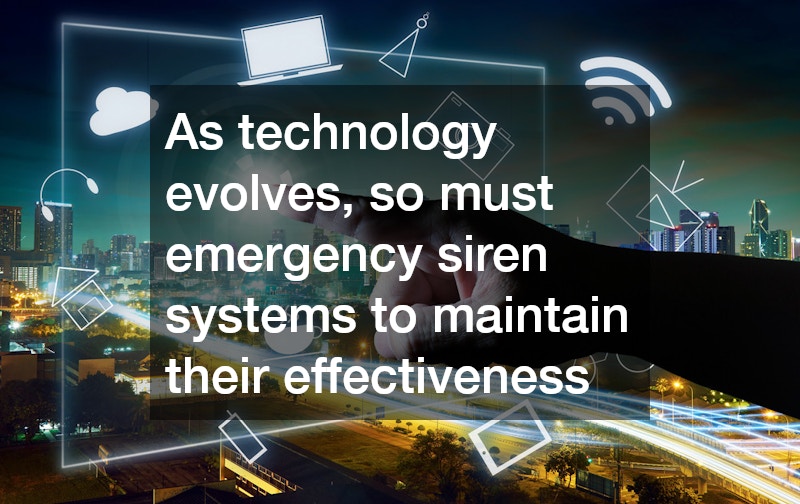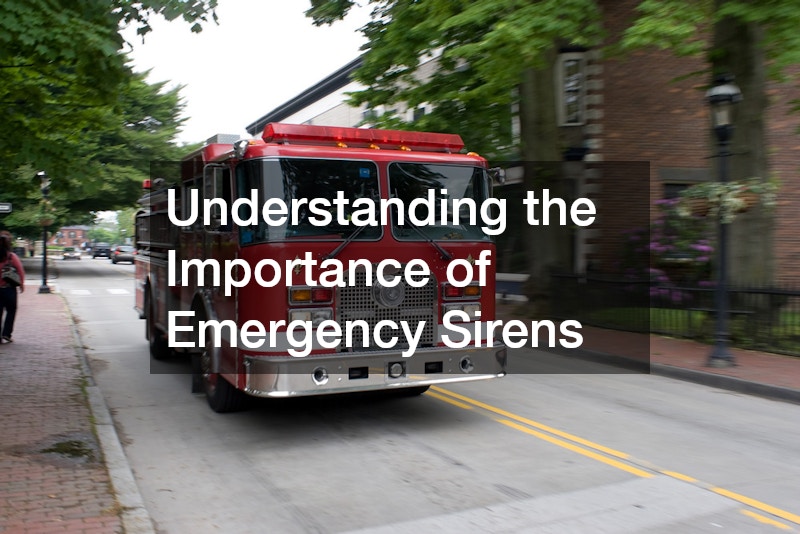Emergency sirens play a critical role in public safety by providing timely alerts about impending dangers. This article explores the essential questions surrounding their importance and functionality in modern society. Through various sections, we will delve into how these systems work, their crucial benefits to community safety, and the technological challenges they face. We hope to offer a comprehensive understanding of why emergency sirens continue to be a pivotal component of public alert systems.
What Are Emergency Sirens, and How Do They Work?
Emergency sirens are systems designed to alert people of imminent threats or emergencies, such as tornadoes, tsunamis, or chemical spills. Their primary purpose is to provide a clear warning signal, allowing people to take immediate action to ensure their safety. Typically mounted on poles or buildings, these sirens are essential in areas prone to natural disasters or industrial hazards. Functioning as a crucial link in public warning systems, they help mitigate potential harm by ensuring rapid dissemination of threat information.
There are several types of emergency sirens, each suited to different environments and purposes. Mechanical sirens, which generate sound through rotating components, were among the first types used and remain common due to their reliability. Electronic sirens are increasingly popular due to their ability to produce a wide range of sounds and integrate with other digital alert systems. Both types offer unique advantages, and the choice often depends on community size, geographical considerations, and available technology.
Siren systems emit sound through the vibration of air, producing a loud, attention-grabbing noise that can carry over large distances. Mechanical sirens achieve this through spinning aerofoils that push air through a fixed rotor, while electronic sirens use amplified speakers. The sound needs to be loud enough to penetrate buildings and alert individuals indoors, making volume a critical factor in their design. Effective siren systems consider factors such as terrain, urban density, and prevalent weather patterns to optimize sound distribution.
Integration with broader public alert systems enhances the effectiveness of emergency sirens. By connecting sirens to digital networks, authorities can trigger alerts remotely and broadcast consistent messages across various platforms. This synergy ensures that communities receive timely and accurate information, reducing confusion during emergencies. Furthermore, combining sirens with other communication methods, like mobile alerts, helps reach a wider audience and increases the chance of message reception.
Why Are Emergency Sirens Crucial for Public Safety?
The core strength of emergency sirens lies in their ability to deliver immediate warnings. The distinct, loud sound they produce cuts through ambient noise, signaling individuals to seek safety without delay. In many cases, having even a few extra seconds of warning can be the difference between life and death. Hence, sirens are an indispensable component of any comprehensive emergency management strategy, providing the necessary lead time to save lives.
Studies have demonstrated that communities equipped with functional emergency sirens tend to have faster response times. By promptly alerting residents, sirens reduce the reflexive time taken to react to a threat, leading to quicker evacuation or sheltering. This swift community response is crucial in minimizing casualties and preserving resources during disasters. Consequently, the presence of emergency sirens directly contributes to enhancing overall public preparedness and resilience.
The successful implementation of emergency sirens in towns vulnerable to tornadoes in the Midwest, United States, highlights their efficacy. These systems’ ability to alert residents well in advance of tornado touchdown has significantly decreased injuries and fatalities. Similarly, sirens have been instrumental in informing coastal communities about imminent tsunamis, allowing for timely evacuation. The success of these alert systems underscores the siren’s role as an integral component of local emergency preparedness plans.
Despite their effectiveness, there have been notable instances where sirens failed to deliver timely warnings. In some cases, technological malfunctions inhibited the activation of the sirens, leaving communities without critical alerts. For example, during a recent hurricane event, a siren failure led to delayed evacuations, emphasizing the need for regular testing and maintenance. These cases serve as reminders of the potential dangers of relying solely on siren systems without redundancy mechanisms.
How Are Emergency Sirens Tested and Maintained?
Routine testing is vital to ensure that emergency sirens remain operational and reliable during actual emergencies. Many communities conduct periodic tests, often monthly, to check the functionality of the siren systems. These tests help identify any mechanical or electronic issues that may impede performance, allowing for timely repairs. Public notification about test schedules is crucial to prevent confusion and maintain the community’s trust in the system’s effectiveness.
The proper maintenance of emergency sirens involves both preventive and corrective measures. Preventive maintenance includes routine inspections and servicing of key components, such as batteries and electrical connections, to preempt failures. Corrective maintenance addresses any identified issues or malfunctions, ensuring sirens are restored to full operational capabilities. A well-structured maintenance program is essential to safeguarding the reliability and efficiency of emergency warning systems.
As technology evolves, so must emergency siren systems to maintain their effectiveness. Modernization efforts focus on upgrading siren components and integrating new technologies that enhance operational capabilities. Advances may include remote activation, integration with GPS, and improved sound projection techniques. Continued investment in modernizing siren infrastructure ensures that these systems remain a robust part of public safety strategies.

Community involvement is key to maximizing the effectiveness of emergency sirens. Educating the public about the purpose of sirens, their sound patterns, and necessary actions upon hearing them increases community preparedness. Participating in awareness programs and drills further ingrains this knowledge, fostering a culture of readiness. Active public engagement ensures that emergency sirens serve as effective tools in community resilience against potential threats.
Understanding the intricacies of emergency sirens reveals their vital role in safeguarding communities. Continued advancements in technology and coordination among stakeholders will ensure these systems remain effective in alerting and protecting the public. As an integral part of emergency management, sirens must evolve to meet emerging challenges, adapting to new technologies and societal needs. By doing so, we ensure that they remain a crucial tool in the ongoing effort to protect lives and property.



